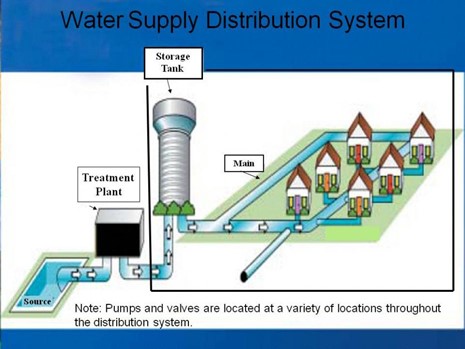Share:
OVERVIEW

A public water system provides water for human consumption through pipes or other constructed conveyances to at least 15 service connections or serves an average of at least 25 people for at least 60 days a year. A public water system may be publicly or privately owned.
There are over 148,000 public water systems in the United States. EPA classifies these water systems according to the number of people they serve, the source of their water, and whether they serve the same customers year-round or on an occasional basis.
About 10 percent of people in the United States rely on water from private wells. Private wells are not regulated under the Safe Drinking Water Act (SDWA). People who use private wells need to take precautions to ensure their drinking water is safe
Public water systems depend on distribution systems to provide an uninterrupted supply of pressurized safe drinking water to all consumers. Distribution system mains carry water from either:
- the treatment plant to the consumer; or
- the source to the consumer when treatment is absent.
Distribution systems span almost one million miles in the United States. They represent the vast majority of physical infrastructure for water supplies.